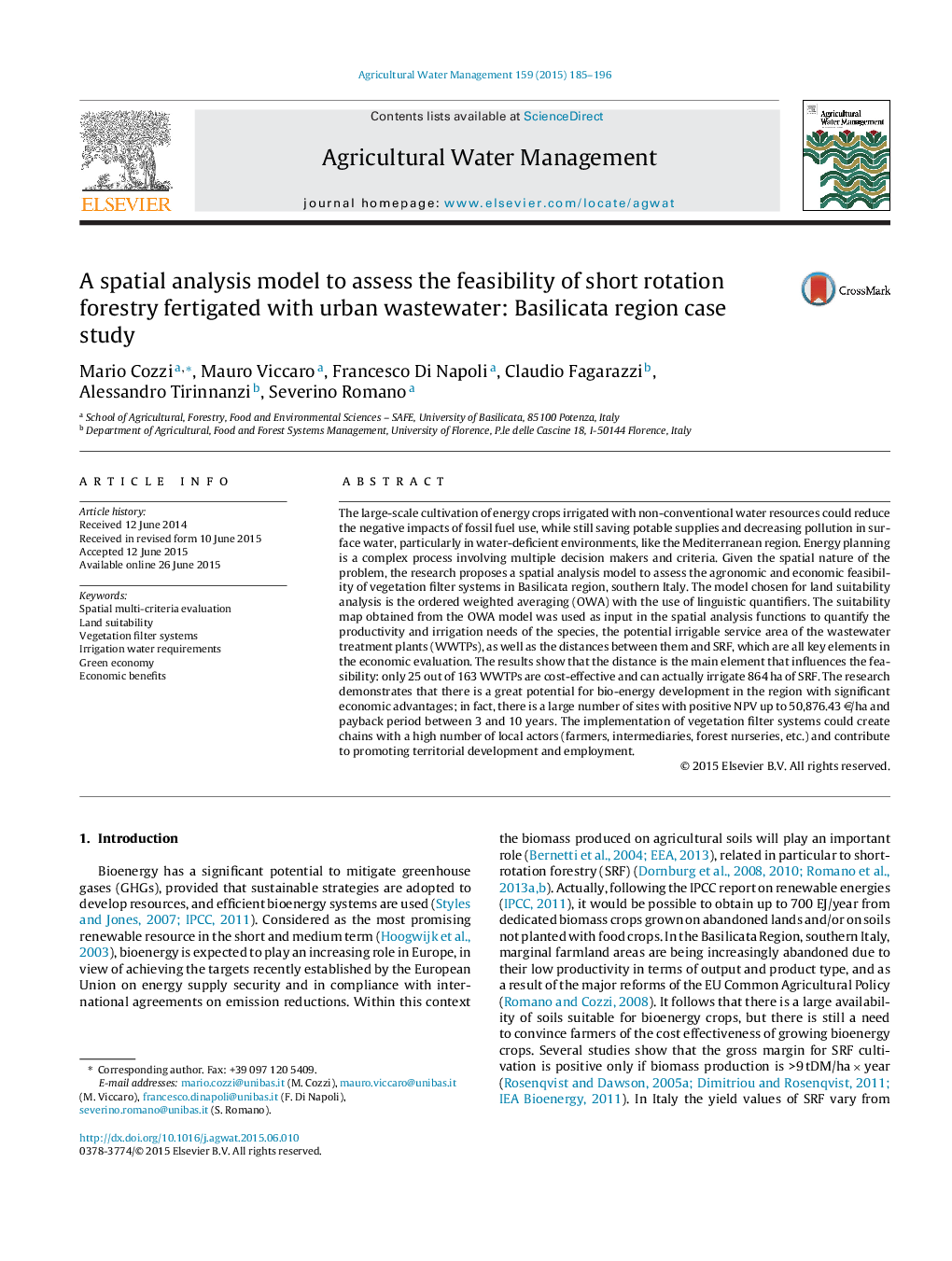| Article ID | Journal | Published Year | Pages | File Type |
|---|---|---|---|---|
| 6363720 | Agricultural Water Management | 2015 | 12 Pages |
Abstract
The large-scale cultivation of energy crops irrigated with non-conventional water resources could reduce the negative impacts of fossil fuel use, while still saving potable supplies and decreasing pollution in surface water, particularly in water-deficient environments, like the Mediterranean region. Energy planning is a complex process involving multiple decision makers and criteria. Given the spatial nature of the problem, the research proposes a spatial analysis model to assess the agronomic and economic feasibility of vegetation filter systems in Basilicata region, southern Italy. The model chosen for land suitability analysis is the ordered weighted averaging (OWA) with the use of linguistic quantifiers. The suitability map obtained from the OWA model was used as input in the spatial analysis functions to quantify the productivity and irrigation needs of the species, the potential irrigable service area of the wastewater treatment plants (WWTPs), as well as the distances between them and SRF, which are all key elements in the economic evaluation. The results show that the distance is the main element that influences the feasibility: only 25 out of 163 WWTPs are cost-effective and can actually irrigate 864 ha of SRF. The research demonstrates that there is a great potential for bio-energy development in the region with significant economic advantages; in fact, there is a large number of sites with positive NPV up to 50,876.43 â¬/ha and payback period between 3 and 10 years. The implementation of vegetation filter systems could create chains with a high number of local actors (farmers, intermediaries, forest nurseries, etc.) and contribute to promoting territorial development and employment.
Keywords
Related Topics
Life Sciences
Agricultural and Biological Sciences
Agronomy and Crop Science
Authors
Mario Cozzi, Mauro Viccaro, Francesco Di Napoli, Claudio Fagarazzi, Alessandro Tirinnanzi, Severino Romano,
